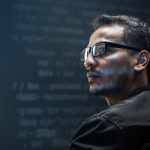Artificial intelligence is the development of computer systems to perform tasks that typically require human intelligence, such as visual perception, speech recognition, and decision making. A rapidly growing field, AI has many levels and subsets that make it essential knowledge for any medium to large company looking to expand its reach in the era of digital commerce. In this article, we will go over three specific branches of artificial intelligence: knowledge representation and reasoning, natural language processing, and computer vision.
Knowledge Representation and Reasoning
The subset of artificial intelligence that builds the foundation for AI applications is knowledge representation and reasoning. Computers themselves lack the knowledge to understand the world around them. Therefore, knowledge representation and reasoning are dedicated to the representation and classification of data about the world in a way that allows computers to solve complex problems.
The easiest way in which this can be simplified is that it allows for machines to act like humans, able to learn from the information around them that can be used to solve complex real-world problems.
Knowledge representation methods
There are four fundamental types of knowledge representation methods:
- Logical representation involves utilizing a method of logic that follows certain unaltered rules to understand and decipher different types of information. In doing so, logical representation allows for true/false data to be captured, which is necessary for forming the basis of programming languages and allowing for the construction of logical reasoning.
- A semantic network stores data or structures in the form of a graphic network represented by nodes and the arcs connecting them. Thus, a semantic network categorizes objects and then links them together, allowing for more expression and flexibility in representation.
- Frame representation deals with creating a frame network. Frames themselves are used to describe something existing in the real world with slots and values, which can be filled in to give the best description. When we connect multiple frames with their values into a network, we gain flexibility over numerous AI applications, as different real-world entities have now been successfully connected and can be utilized together.
- Production rules are not always efficient and lack precise language, but they are the most expressive form of knowledge representation. For example, if a condition of a rule is true, then the action that is part of the rule is performed.
Overall, these four different types of knowledge representation and reasoning build a strong foundation for AI that allows machines to interact with the real world, perform data analyses and comparisons, and solve problems for businesses.
Natural Language Processing
Natural language processing or NLP is a branch of AI that seeks to give computers the ability to comprehend human language in speech or text. In modern business, the technology has found its way into various digital areas. For example, speech-to-text features, Apple’s Siri, sentiment analysis, and chatbots utilize NLP.
How NLP works
NLP works through two phases. Data preprocessing prepares and cleans inputs for analysis, while algorithm development derives a means to process those inputs.
- Data preprocessing is done through tokenization (breaking down inputs into packaged units), stop word removal (removing words not important to overall meaning), lemmatization and stemming (reducing words to their root forms), and part-of-speech tagging (identifying words based on their part-of-speech).
- Algorithm development is typically done through rules-based systems, which use meticulously designed sets of linguistic rules to determine intent, or machine learning-based systems, which learn to perform tasks based on a collection of training data fed through them.
In a society dominated by big data, uses for NLP are becoming ever more pronounced. Much of the data gathered by companies is in the form of natural human language, necessitating NLP to use this portion of information. Additionally, Natural language processing is an essential part of many outward-facing automated processes such as chatbots. To create a meaningful and significant way to provide customer support without occupying massive amounts of human labor, NLP must be used to ensure that specific problems are accurately addressed.
Some more general uses of NLP include customer feedback analysis, customer service automation, translation, word processors, recruitment, and task automation. These uses provide benefits such as improved accuracy and efficiency, summarization capabilities, professional assistance capabilities, advanced insights, and improved sentiment analysis.
Computer Vision
An important field of artificial intelligence (AI) is computer vision. Computer vision allows computers and systems to extract meaningful information from digital images, videos, and other visual inputs. It then takes action and makes recommendations based on the information it takes.
Unlike human vision, computer vision takes more training to perform basic functions like telling objects apart, assessing how far away they are, and analyzing if there is something wrong with them. However, computer vision can surpass human vision once it is trained. For example, it has the ability to inspect thousands of processes or products a minute while making little to no errors.
Key technologies of computer vision
Computer vision needs a lot of data in order to make accurate, speedy decisions. Two main technologies are used to feed computer vision the data it needs:
- deep learning and convolutional neural networks (CNN). Deep learning is a subset of machine learning that uses algorithms inspired by the human brain to learn from large amounts of data. Computer vision uses deep learning to constantly learn right from wrong based on real-life situations. No physical programming is needed.
- a CNN breaks images into pixels that it uses to perform convolutions (creating a third function from two other functions) and make decisions based on what it sees. A CNN is paired with deep learning to determine the accuracy of its predictions until the predictions start to come true. In more simple terms, deep learning makes the decisions based on the information that a CNN provides.
Overall, computer vision can be applied to many different sectors. Google Translate uses computer vision to allow users to point their smartphones at foreign words and immediately receive a translation. Furthermore, it is used in the energy, utility, manufacturing, and automotive industries. Based on trends, the market for computer vision is constantly growing and is expected to reach 48.6 billion USD by the end of 2022.
Sources:
- https://www.ibm.com/topics/computer-vision
- https://www.fingent.com/blog/classifying-knowledge-representation-in-artificial-intelligence/#:~:text=Knowledge%20Representation%20is%20a%20field,handle’%20real%2Dlife%20tasks
- https://www.techtarget.com/searchenterpriseai/definition/natural-language-processing-NLP#:~:text=Natural%20language%20processing%20(NLP)%20is,in%20the%20field%20of%20linguistics









